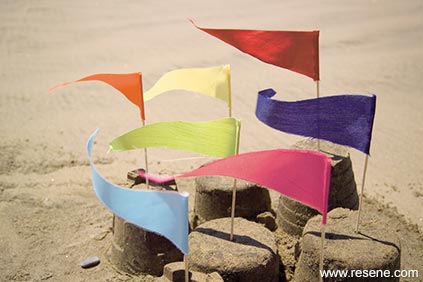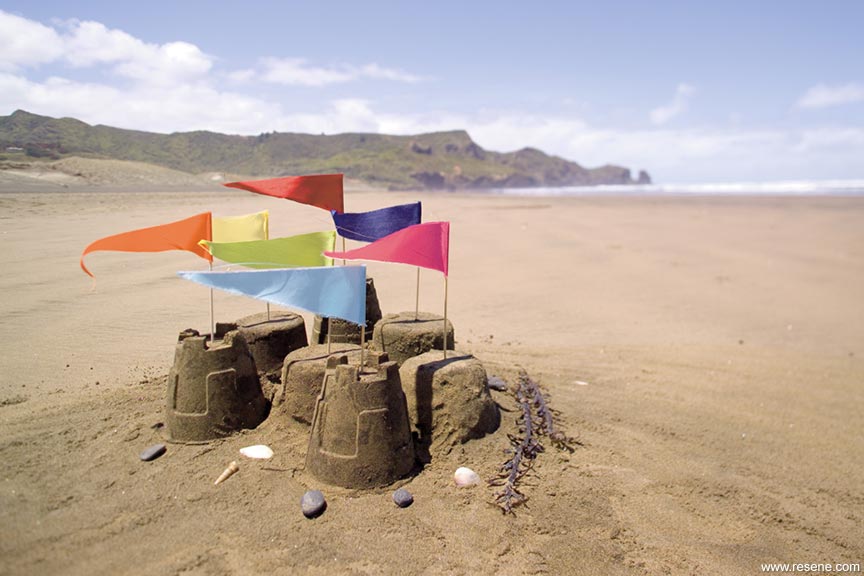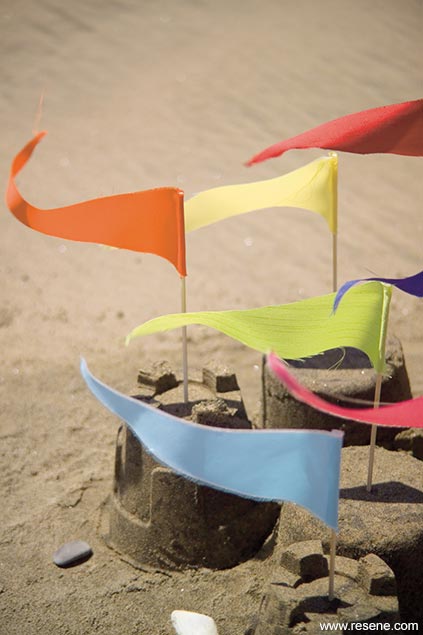From Habitat magazine - issue 06
Despite the best efforts of some, the minimal box house with acres of uncovered glass and one designer chair has never won over most homeowners.

People love to be surrounded by the warmth and texture of fabrics: Draped on their windows, upholstering their chairs and couches, and massed together in their cushions and throws.
Fortunately, we are blessed with a number of experienced textile houses, as well as shops staffed with people who love fabrics and know what works here. In addition to fine local brands, we have access to an eye-watering array of labels from Europe, England, Thailand, America and more, with price points from $25 a metre to more than $400.
How, then, do you choose the right fabric for your home? As one experienced designer says, “the biggest problem with fabrics is simply that there are too many of them. Making a commitment to the one or two or three perfect choices for the job is no easy task”.

Picking the right fabric comes down to appeal and suitability.
“As well as choosing the fabric to create the look you’re wanting to achieve, you have to be aware of the environment in which you are placing it,” explains Sharon Baird, sales manager for Maurice Kain Textiles. “Interior textiles have many characteristics and the longevity of your fabric can be extended or reduced by many factors.”
Textiles are generally manufactured for specific applications, which fortunately are clearly displayed on the swatch labels and in the sample books. Some are suitable only for drapery or cushions, others for upholstery, while some can do both jobs equally well. And sample books often put together entire “stories” in fabrics, so that you can easily create a terrific scheme, mixing the right materials for the right jobs.
Many textiles are laboratory tested and rated for colour-fastness (known as crocking resistance in the commercial trade) and ultra-violet light resistance (how fast they might fade). However, all fabrics, if exposed long enough to direct sunlight – especially in our infamously high levels of ultra-violet light – will discolour or break down.
Natural fibres – cotton, hemp, linen or silk – have a beautiful hand-feel and look luxurious. That’s why they’re loved by designers and homeowners alike. The thing is, because they have less resistance to bacteria and fungi, they are more likely to weaken and rot. Silk is fragile in our sunlight, and cottons and linens tend to move as the atmosphere changes from humid to dry through the year… or day! Therefore, fabric houses are increasingly offering synthetic fibres that mimic the look and feel of the finest natural products.
Synthetic fibres such as polyester and acrylics boast better sunlight resistance and durability, and have good thermal properties, and because of this have long lost their cheap and nasty reputation. They are increasingly favoured for both upholstery and window treatments, which have to live up to wear and tear. Their stiffness can be used to great effect for full, opulent drapery. What’s more, to meet an increasingly fashion-driven market, textile technology is creating fabulous new fabrics with gloss, plastic, metal, and even wood or bamboo-like effects. Price is your only limit.

However, Sharon advises that the long life, thermal insulation and attractive draping of curtains and blinds are more about the linings than the textile itself. She advises not to skimp with the cheapest linings, and recommends even lining so-called thermal fabrics for better wear and warmth. And remember that more lavish curtains can be ordered with a bumph (a thin, quilt-like padding) between the lining and the fashion fabric.
Upholstery fabrics have their own rating scales, based on rub tests. For commercial applications, the Wyzenbeek “double-rub” rating simulates a person getting into and out of a chair, rubbing clothing against the upholstery. For general contract upholstery or heavy family use, a double rub abrasion rating of 15,000 is fine; heavy duty upholstery needs a rating of 30,000 – think hotel or conference rooms – while extreme wear – theatres or airports – goes up to 100,000. Let’s face it, that’s not necessary in your average family room.
Australian, New Zealand and European fabric houses more commonly use the Martindale test, which rubs fabric with an abrasive material in a figure eight. Look for a rating of 20,000 cycles for general contract upholstery and 40,000 cycles for heavy duty.
Finally, the appearance change of pile fabrics such as velvet velveteen, corduroy, knitted velour, knitted pile and flock fabrics are tested using the Stoll test. For these, though, lower ratings are fine for low-use pieces – go ahead and cover a chair in your bedroom with a gorgeous, fragile silk, or use an embroidered or beaded fabric for cushions or a duvet cover.
Another biggie is to check your upholstery fabrics for their flame resistance and for physical properties such as adversity to piling, seam slippage, or tearing. Check the labels on the back of fabric swatches or ask knowledgeable staff who can quickly put you right.
When you are picking large expanses of fabric for a project – a sofa, for example, can use 12 metres or more, and a room of floor-length drapes might take up more than 40 metres – be aware that colour differences between rolls and batches of fabric are unavoidable. The samples displayed on cards or chips may not exactly match the actual yardage you’re after. So, be sure to ask your fabric supplier to colour batch or sort rolls of fabric so that furniture or curtains hanging together actually match.
Material is supplied to be cut in the direction shown in sample presentations. If you wish to use fabric another way – for example, centring a large pattern on a sofa back, or hanging stripes horizontally – ensure you order extra.
Finally, don’t give up on that wonderful piece of cloth just because it’s too expensive or not sturdy enough for everyday family use. You can build an entire scheme around one stand-out fabric. Treat yourself to a couple of metres for cushions or a footstool, or for a tiny side chair. Then, bring in other hardier or lower-cost textiles for big sofas or curtains. Be modern and don’t match everything. Mix and layer multiple colours, textures and patterns to create a vibrant, one-of-a-kind home, brought to life by that key “treasure” textile.
words: Kate Williams
pictures: Kallan MacLeod
Search habitat magazine stories
Printed copies of habitat highlights are available from late March 2024 at Resene ColorShops and resellers, while stocks last. You can view back issues of habitat magazine online.
Specifiers:
If you have an idea, project or story that you think would suit habitat, we’d love to hear from you. Please drop us an email with your details and include photos if submitting a project.
Sign up for a DIY card and Save! Australia | New Zealand